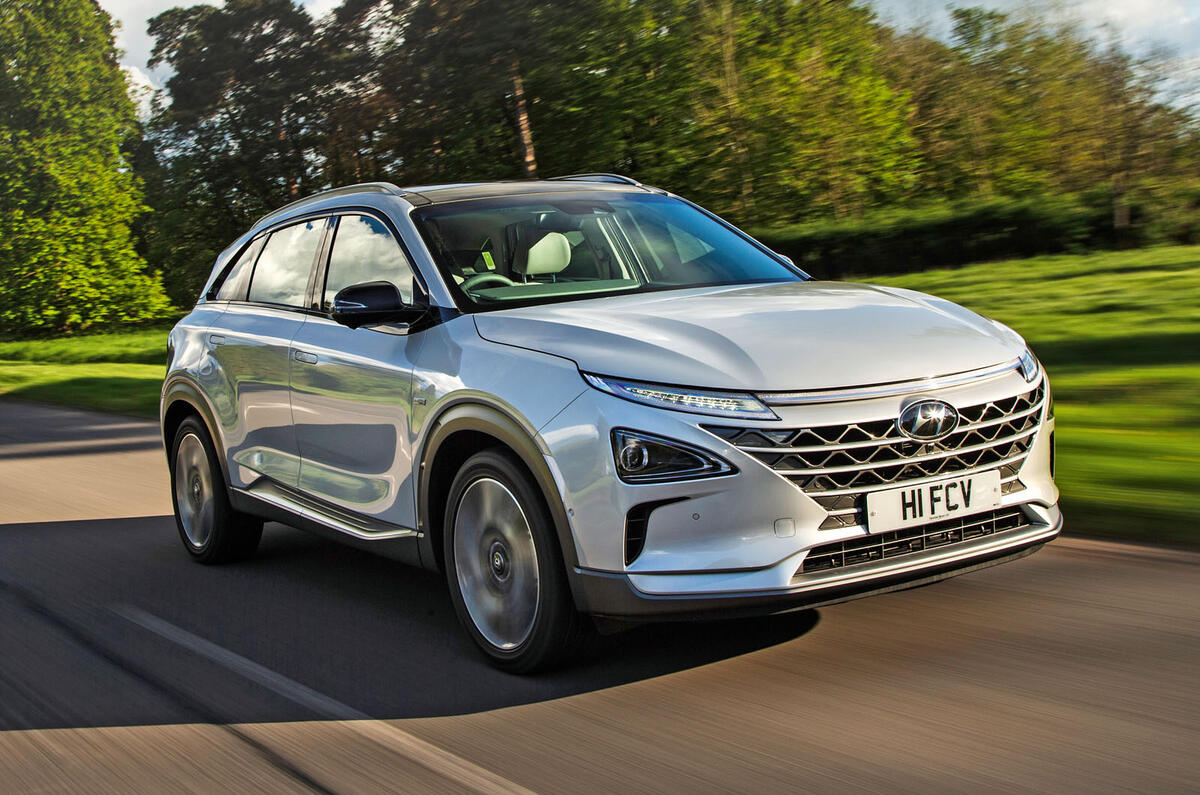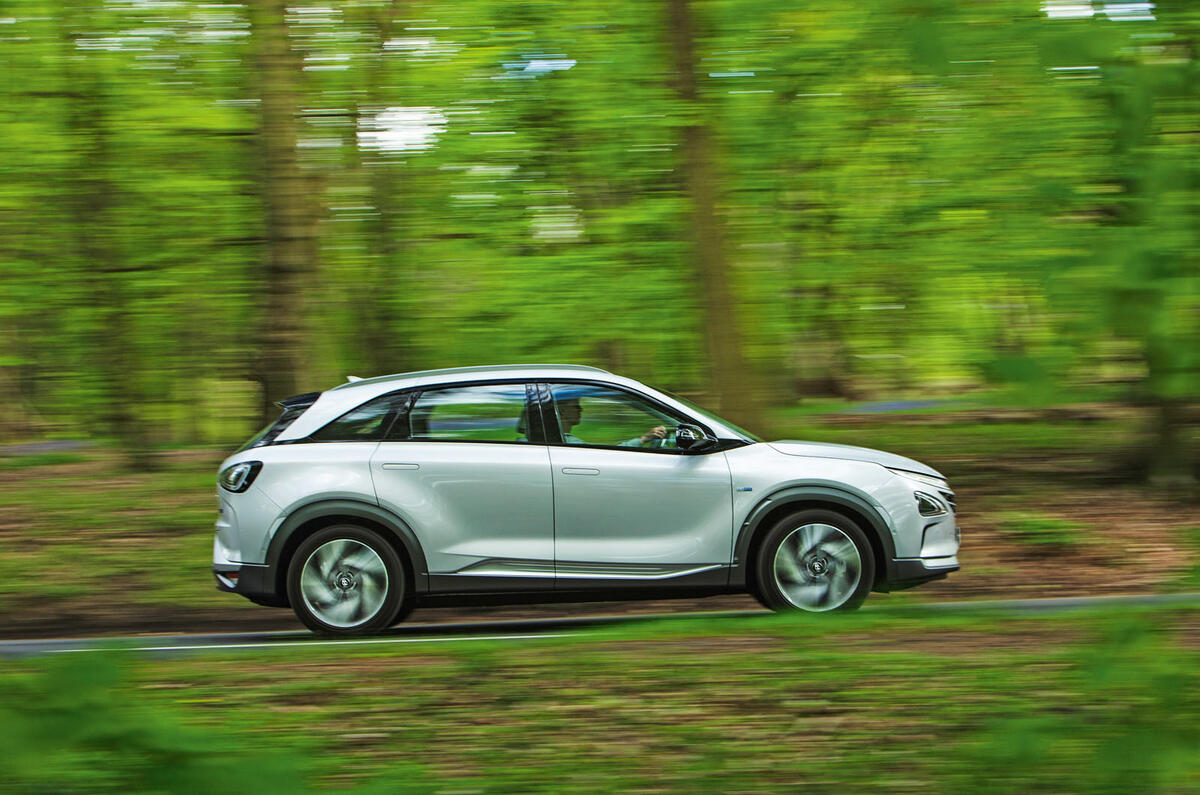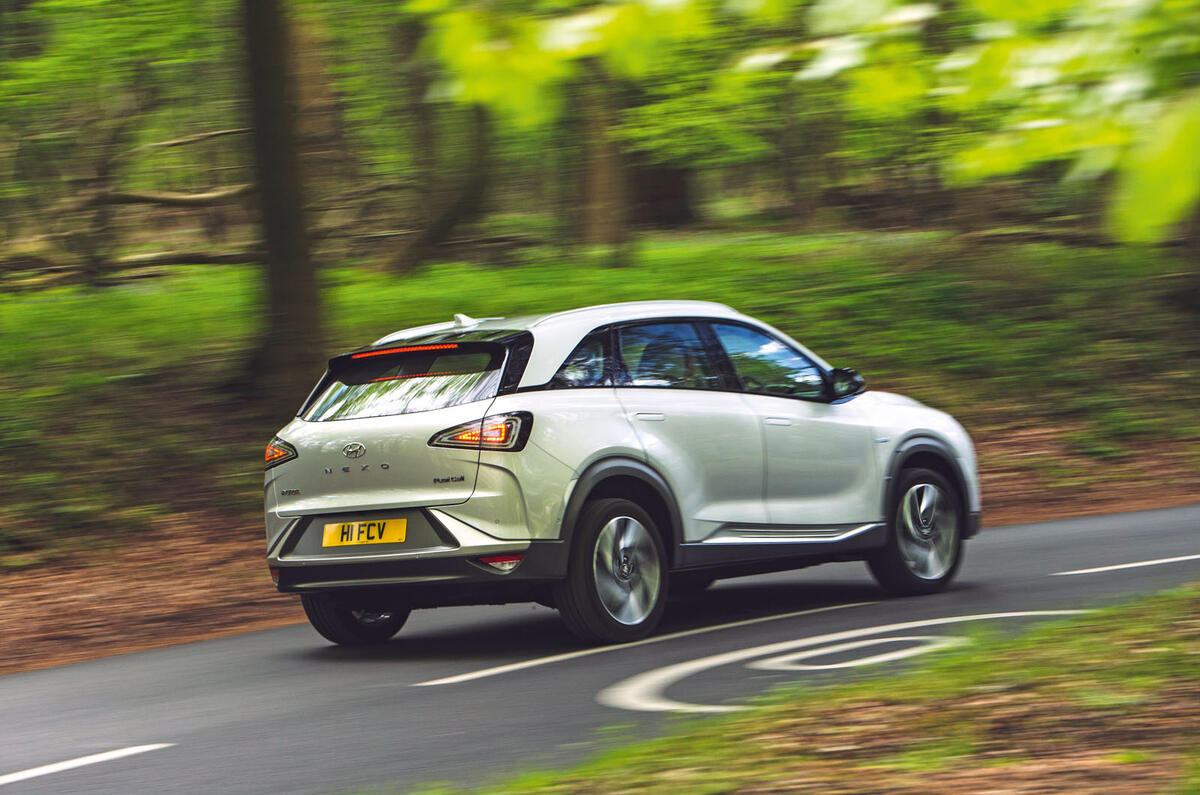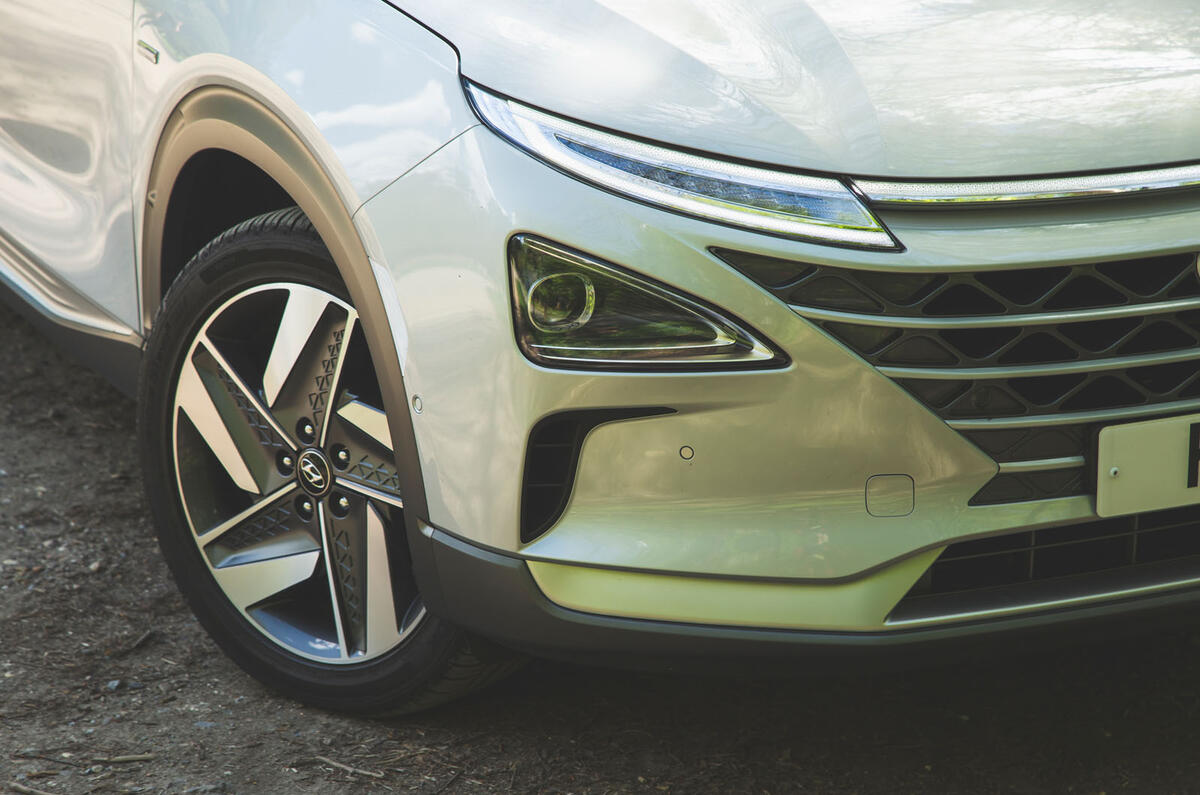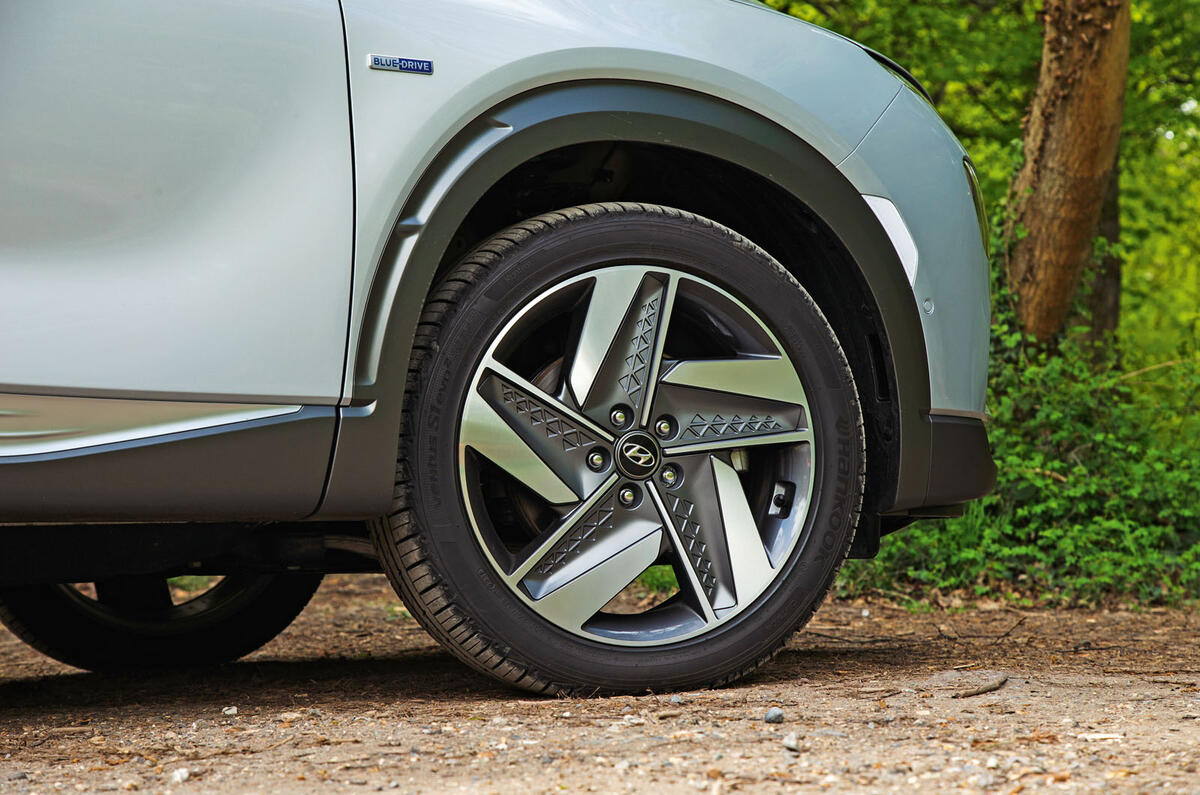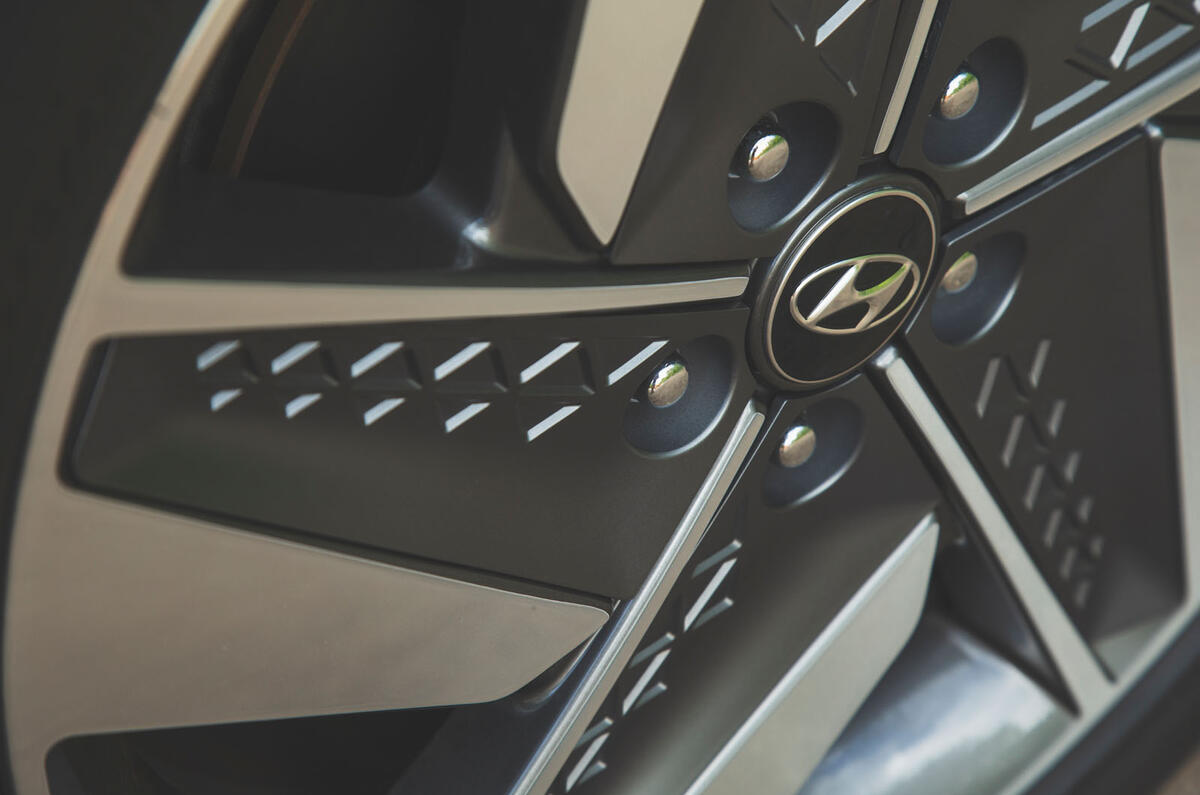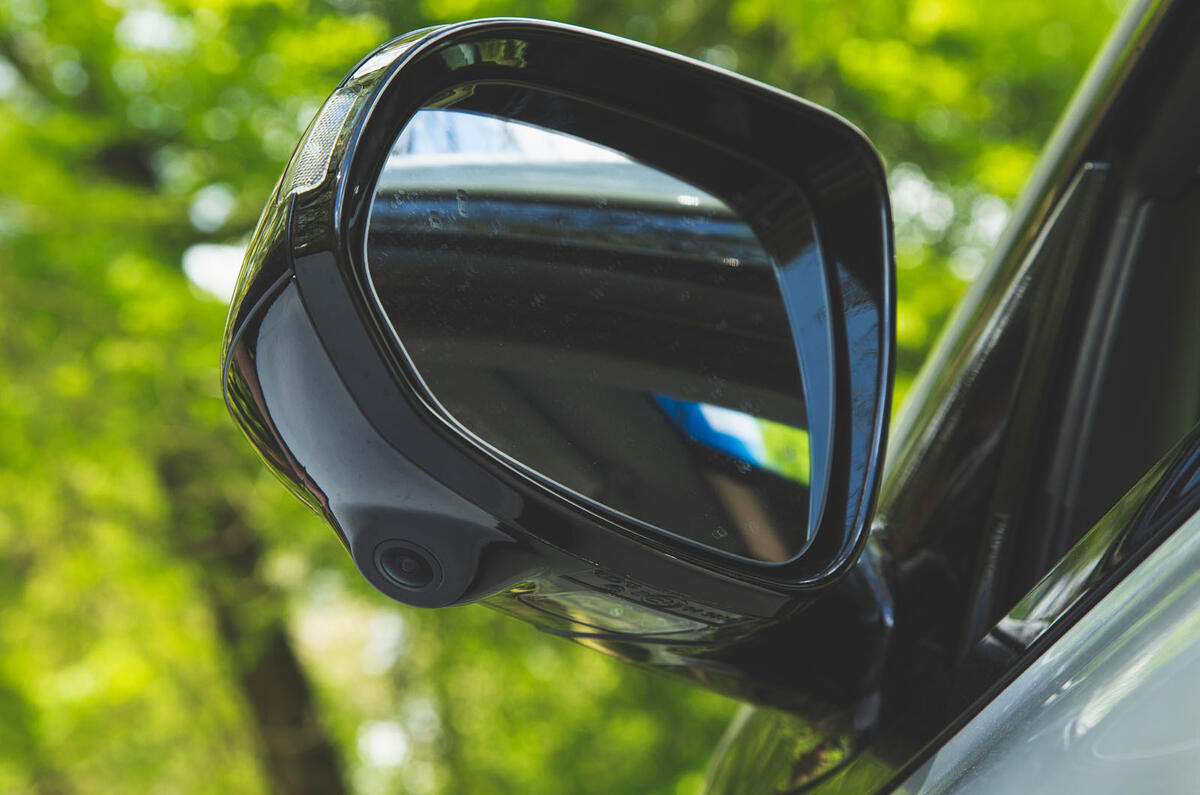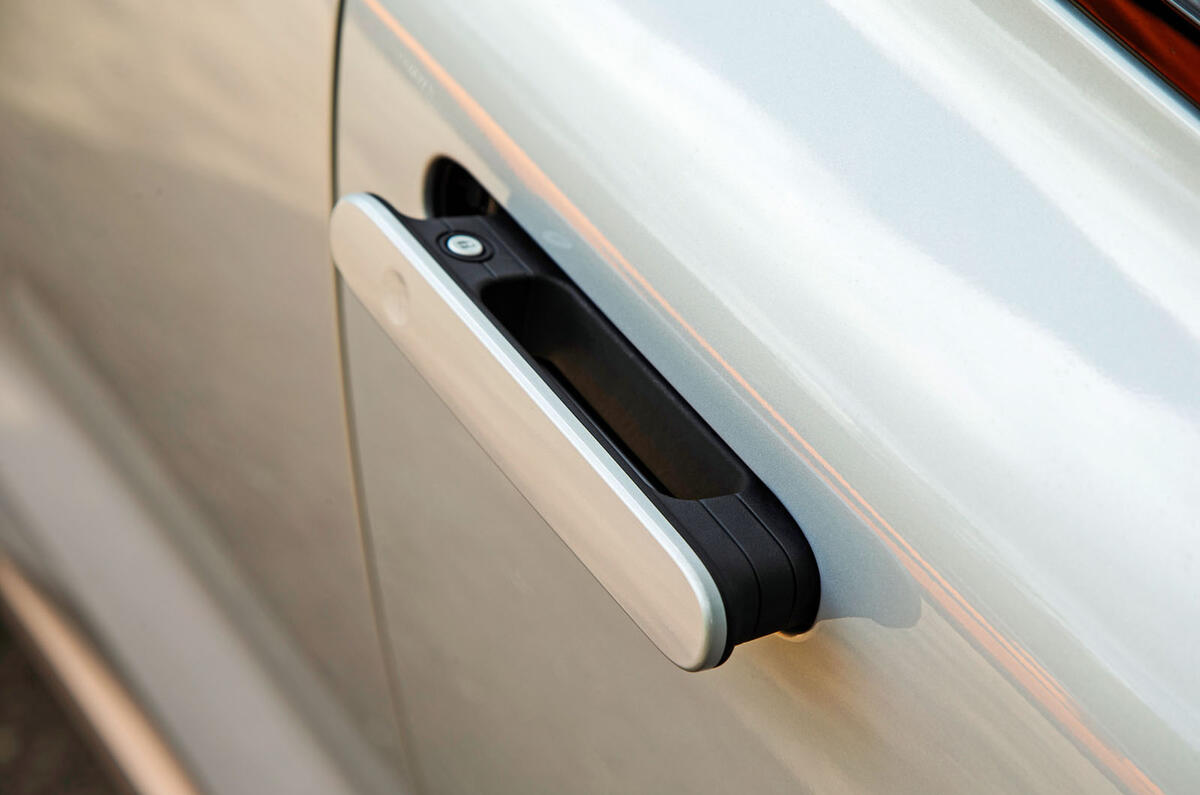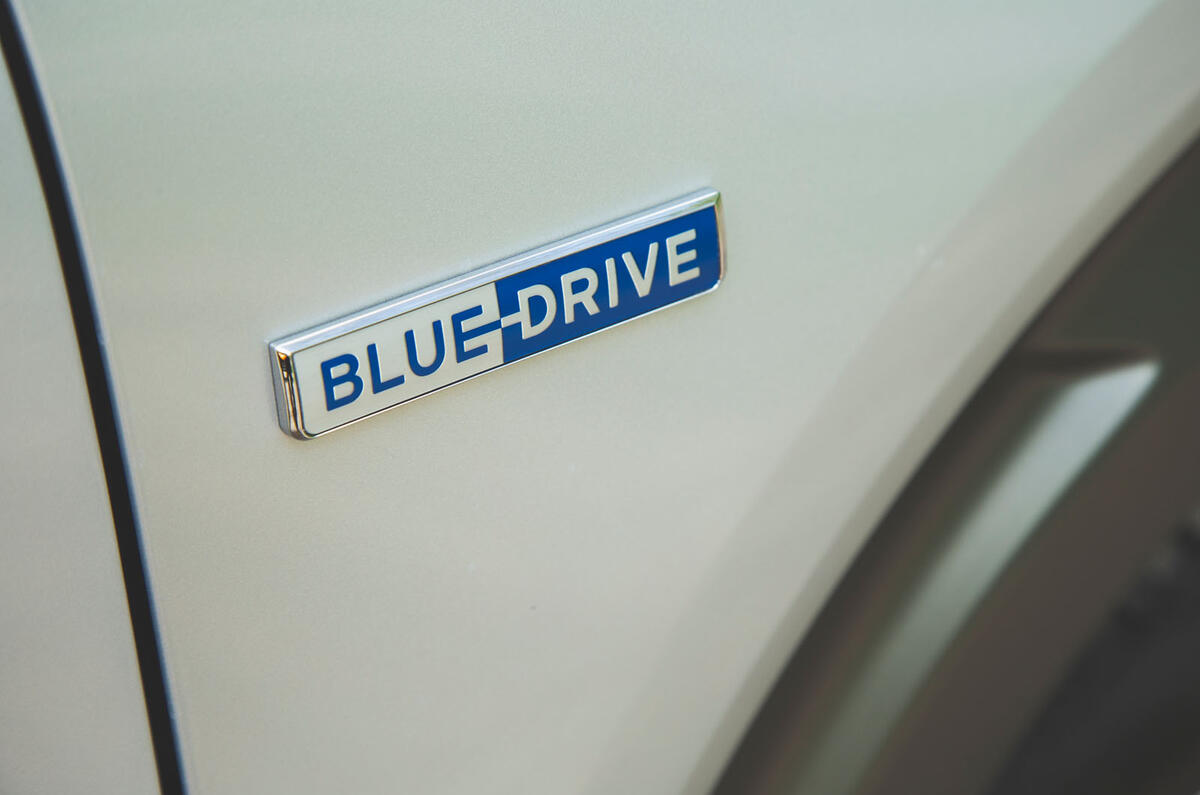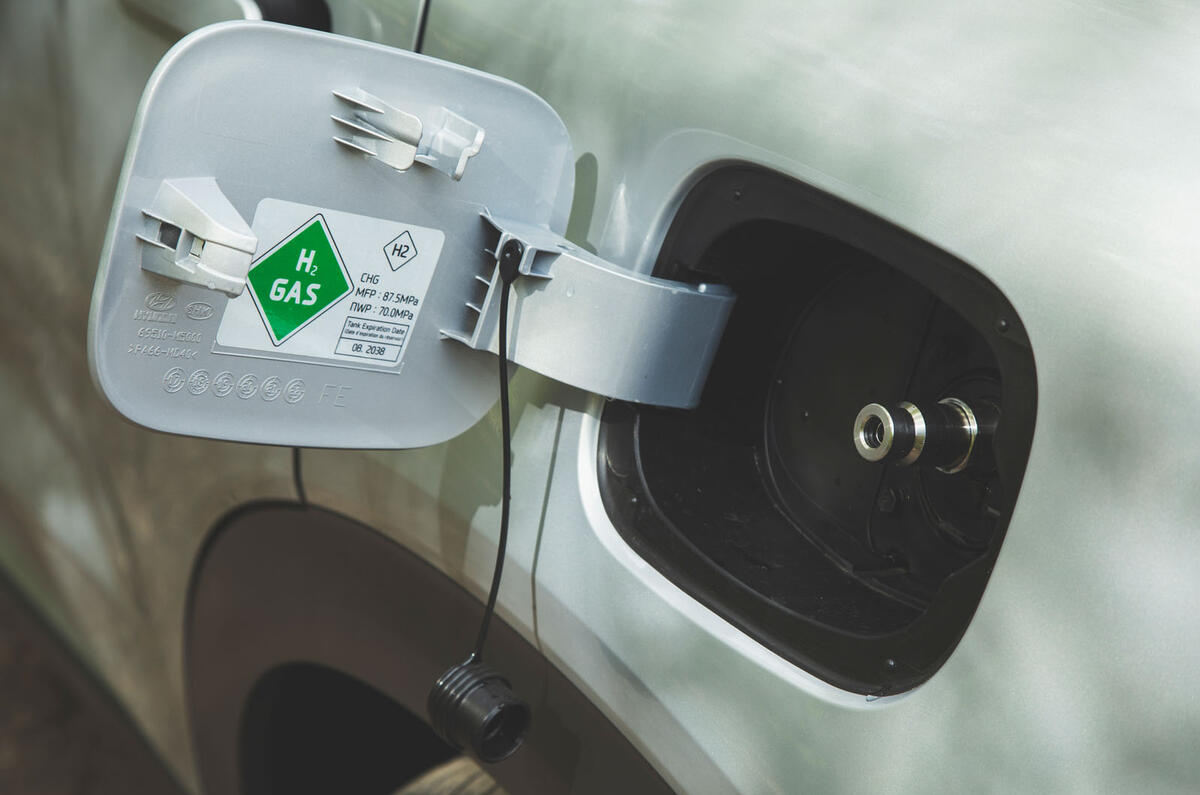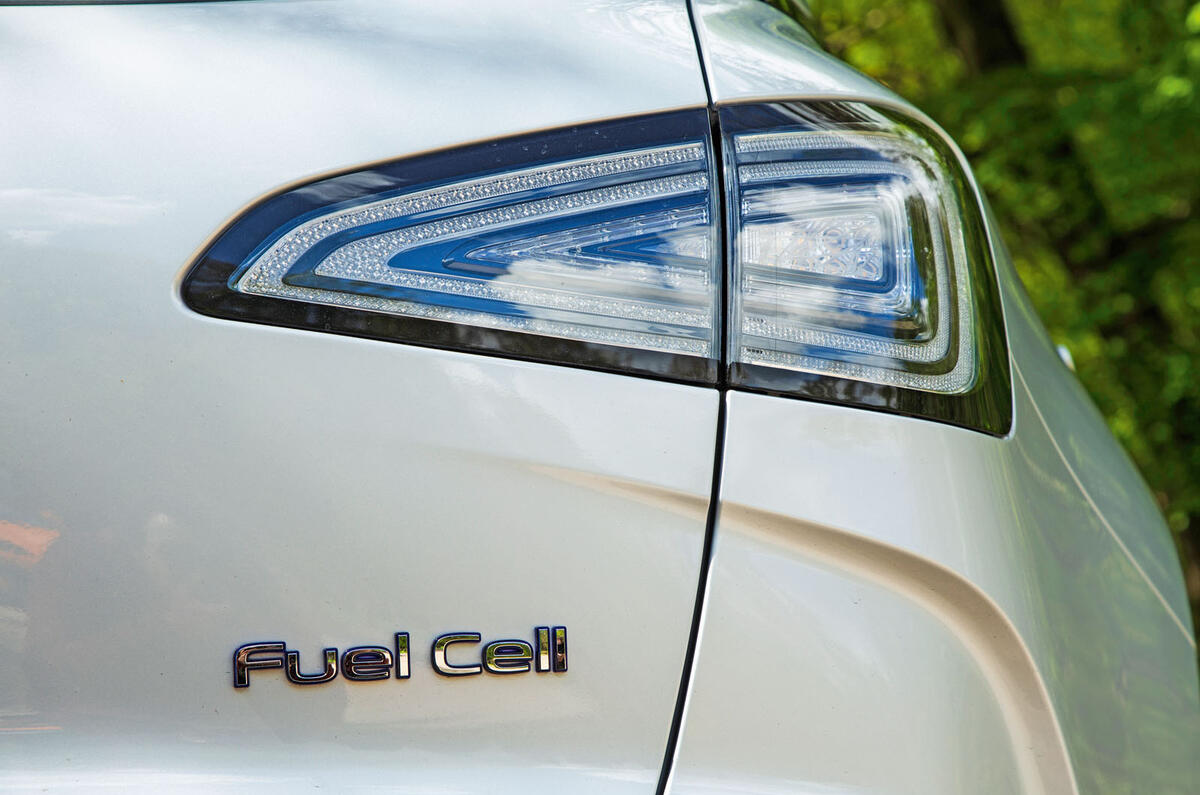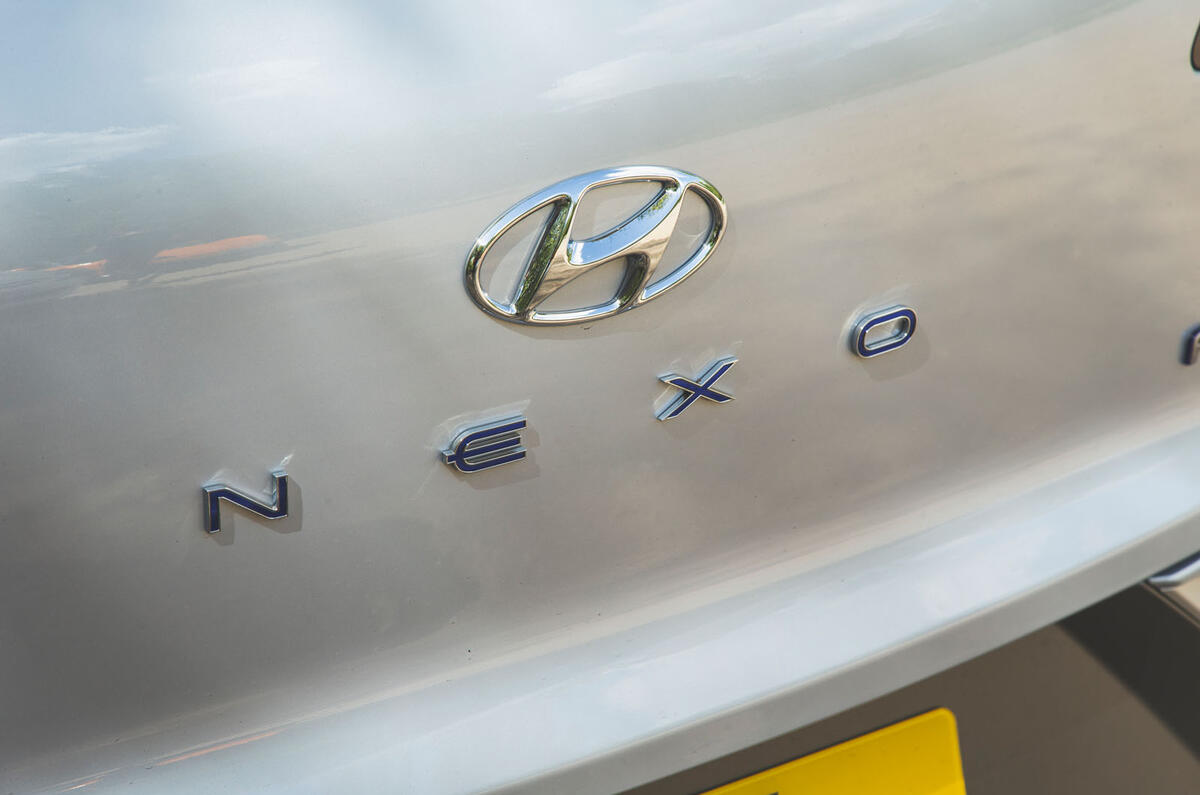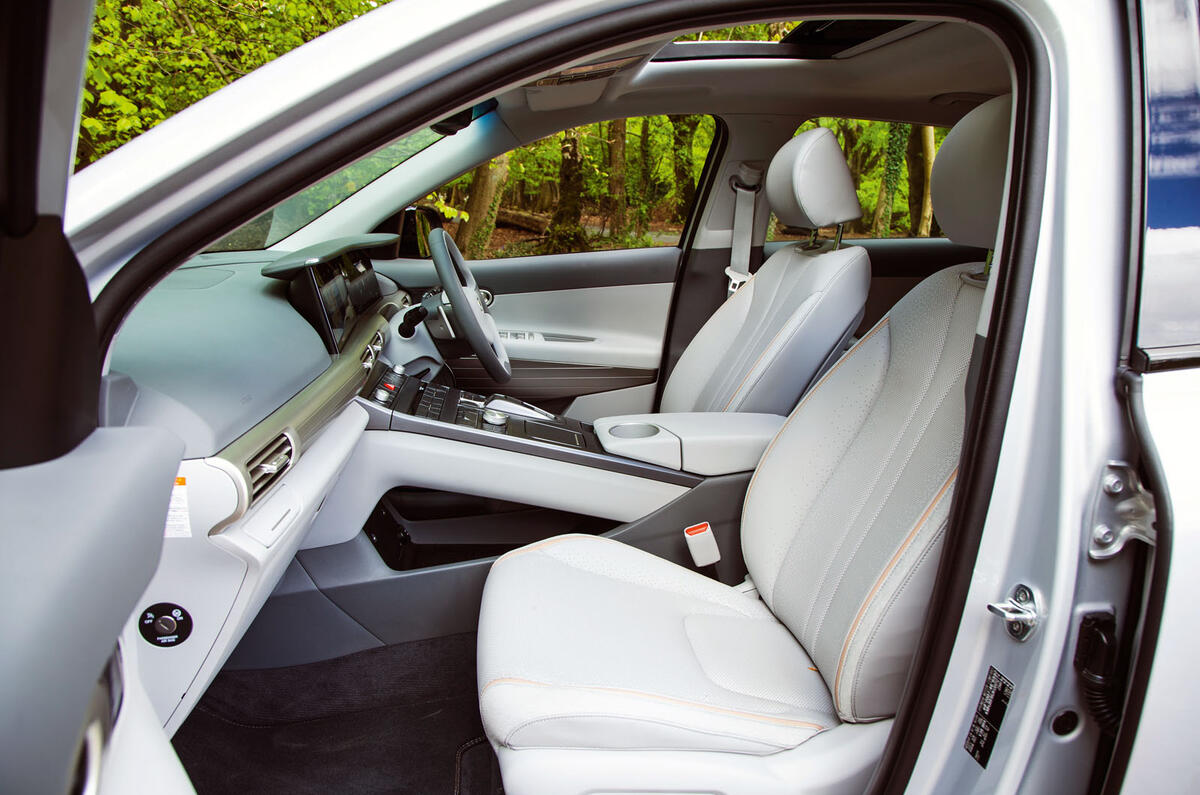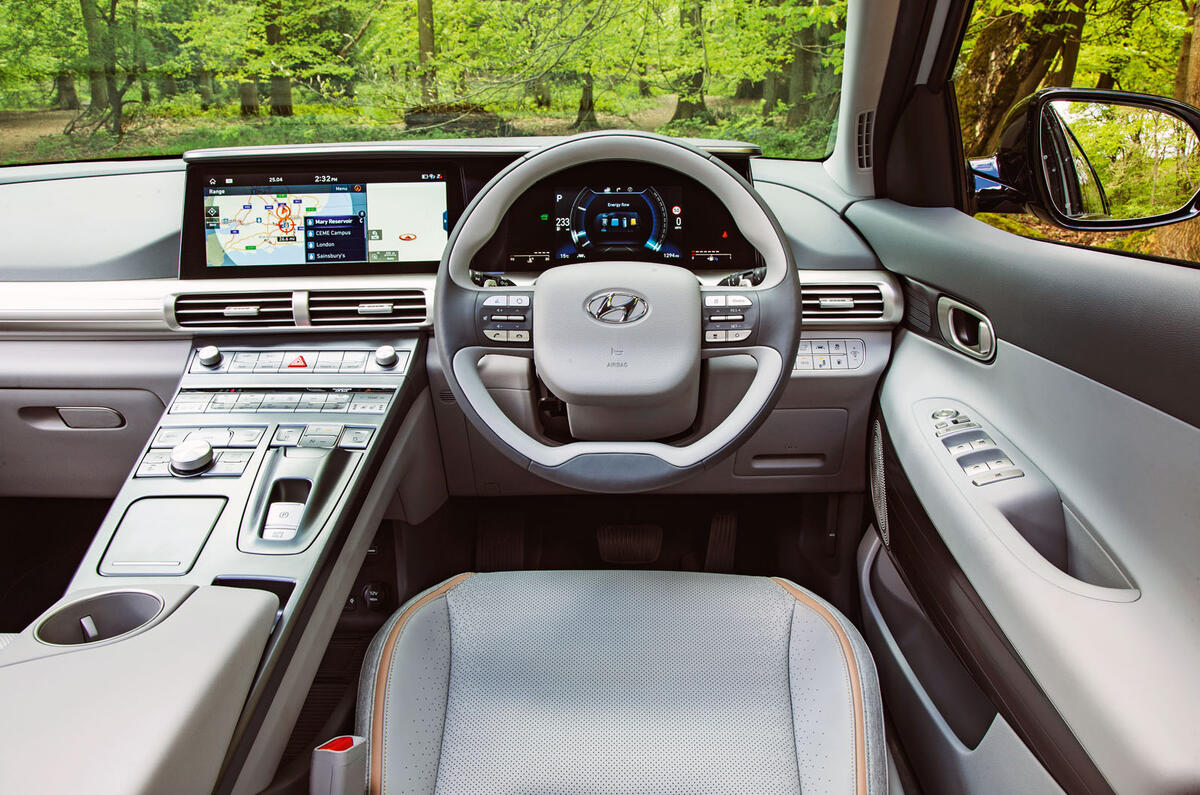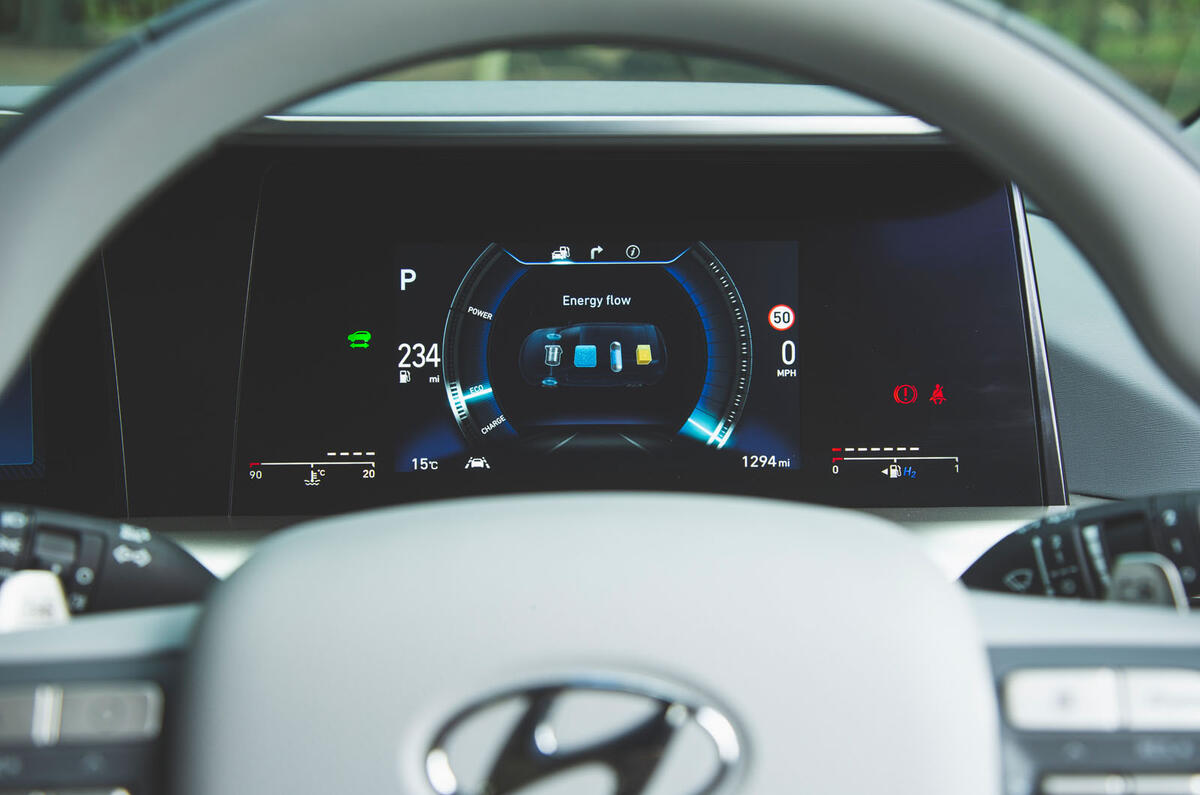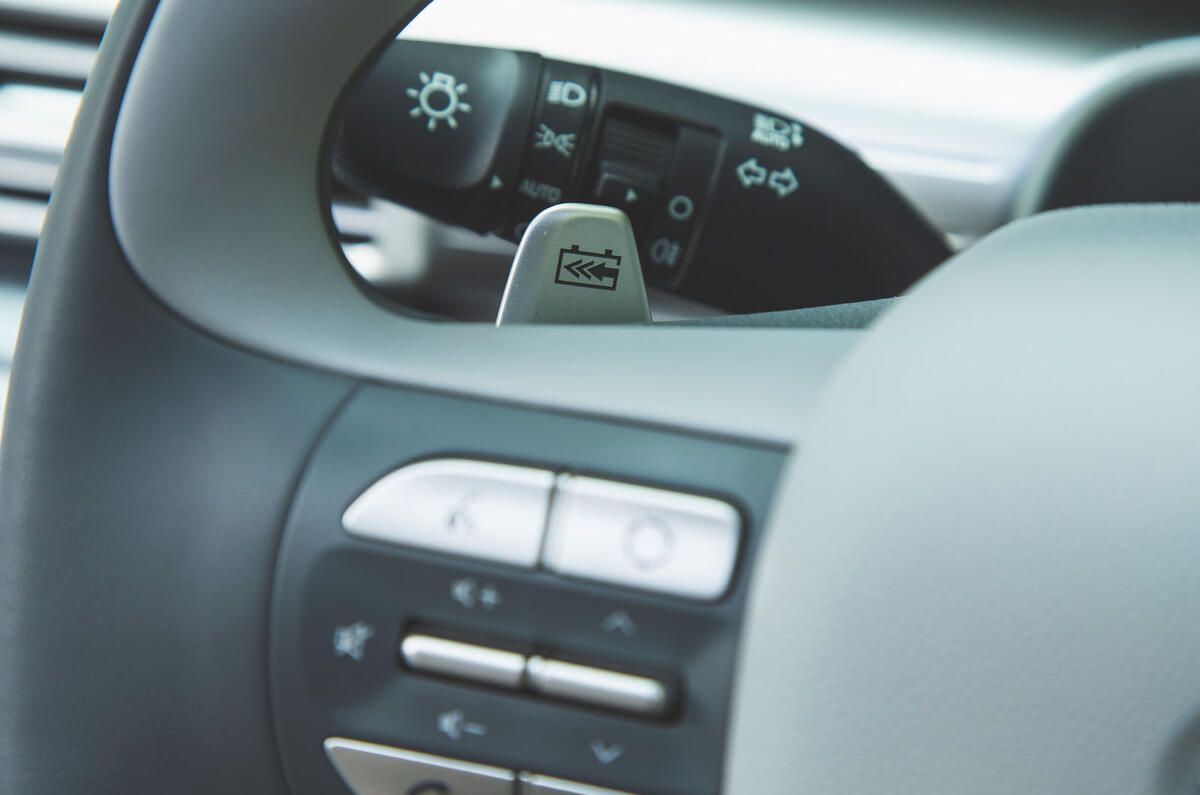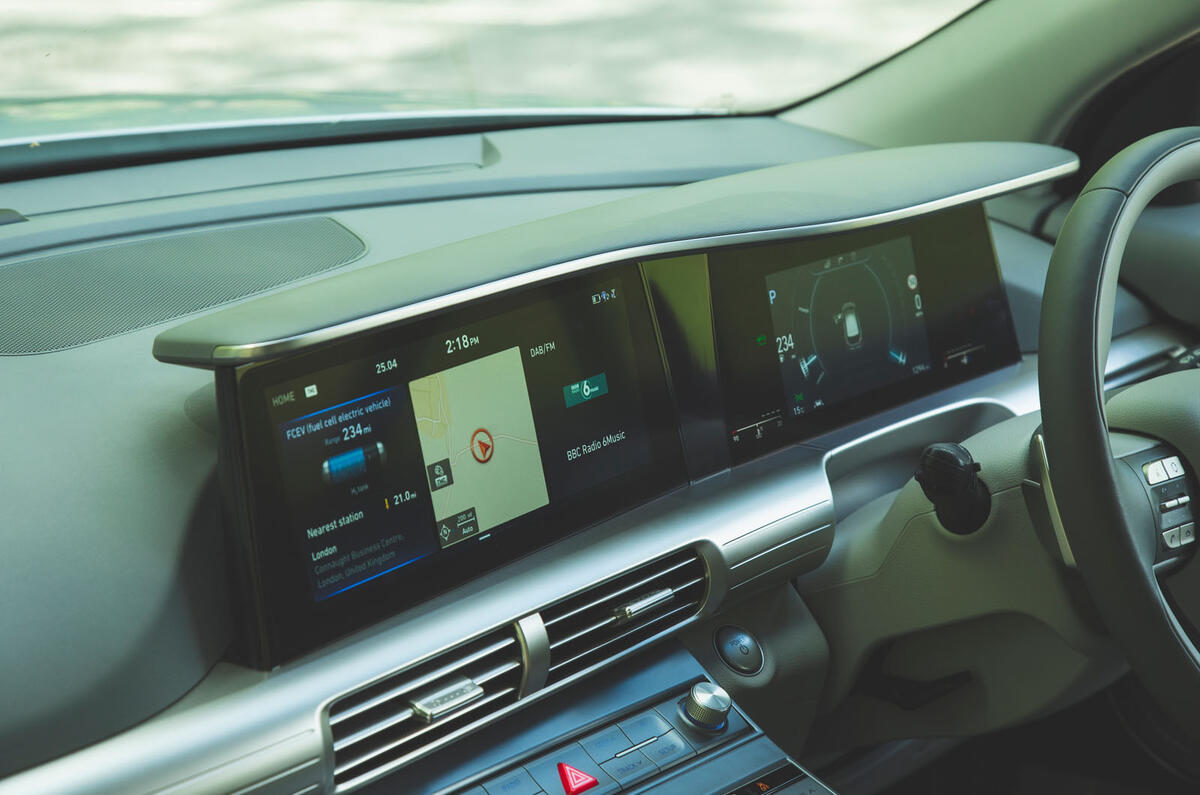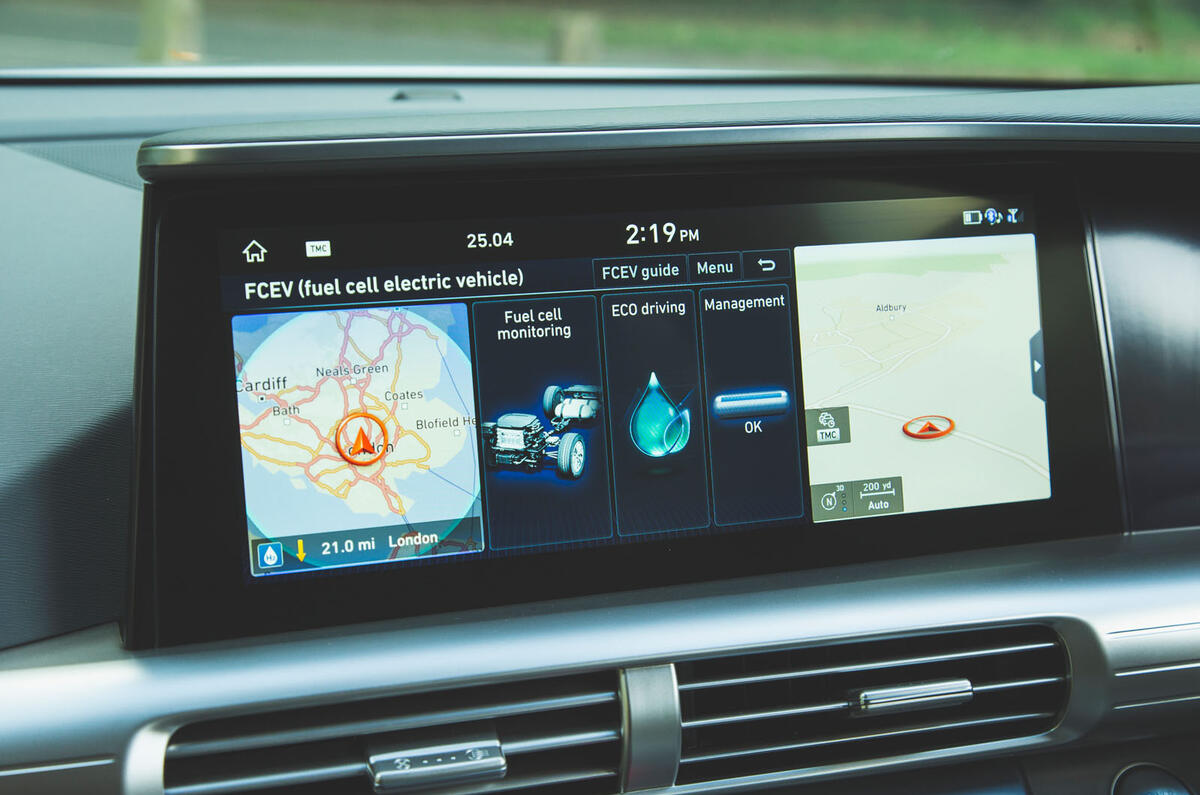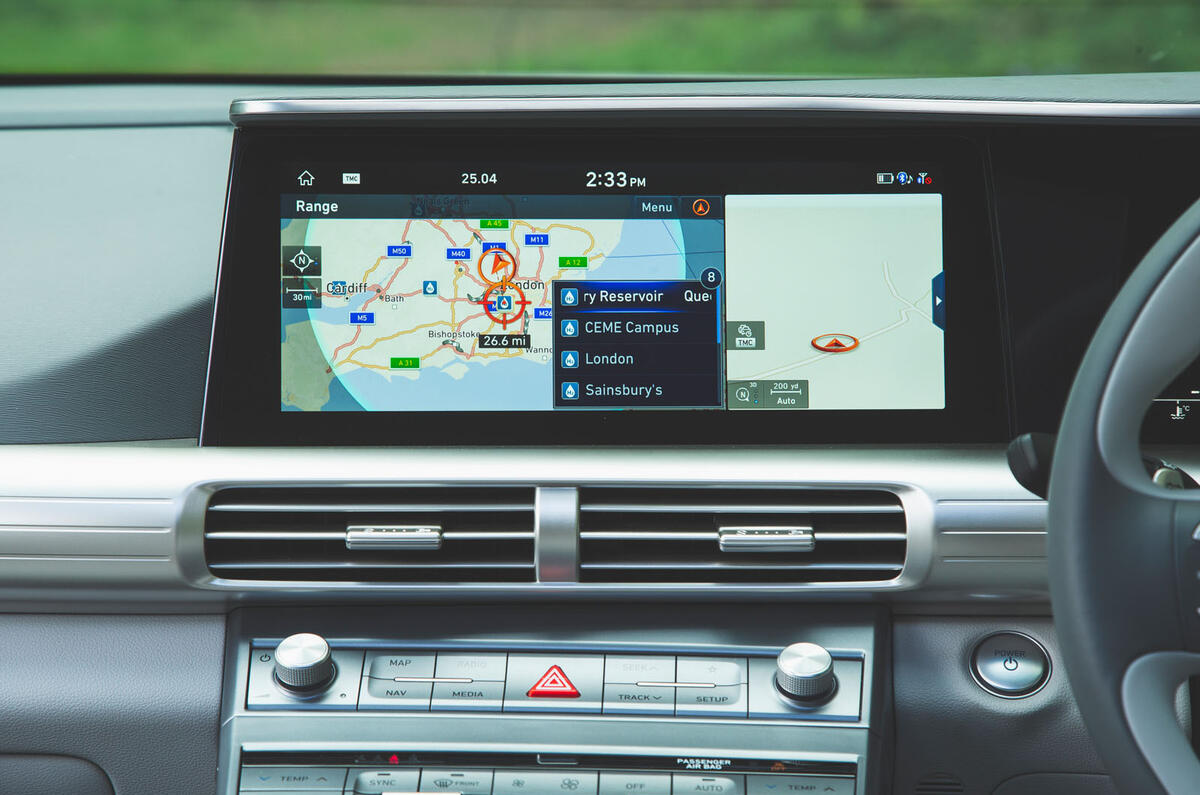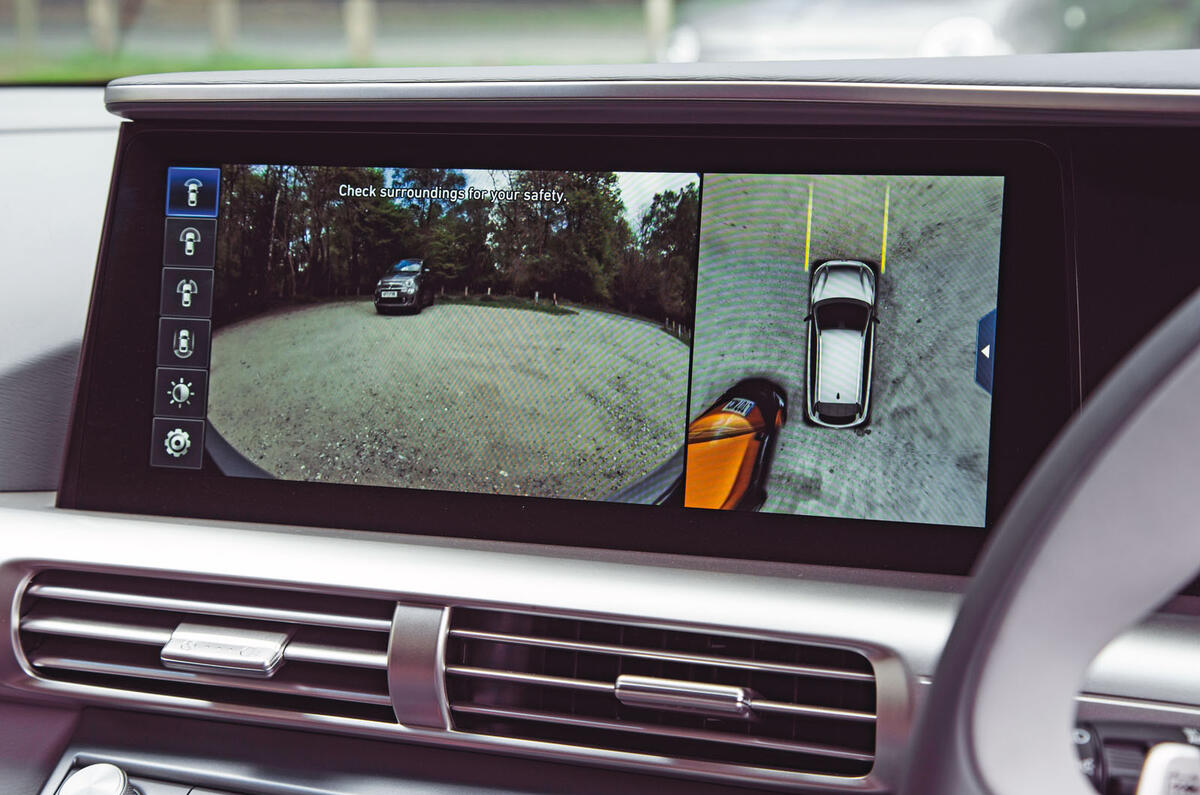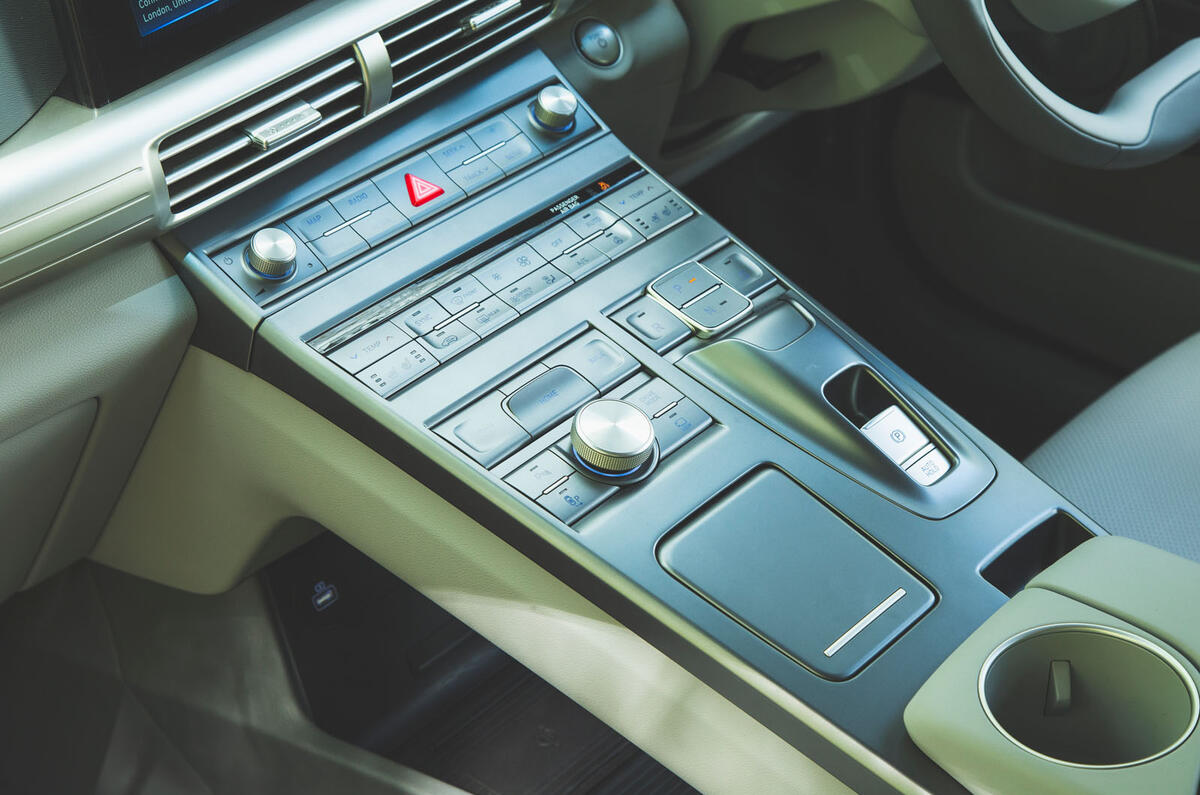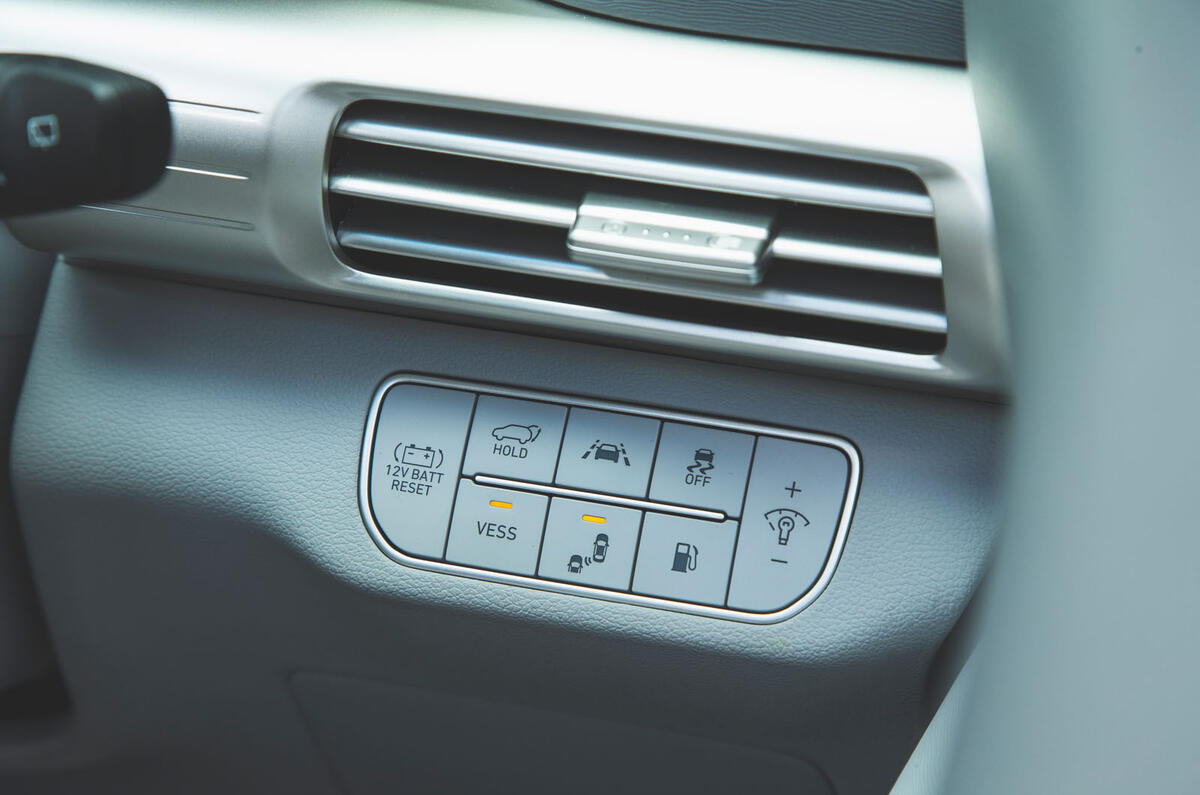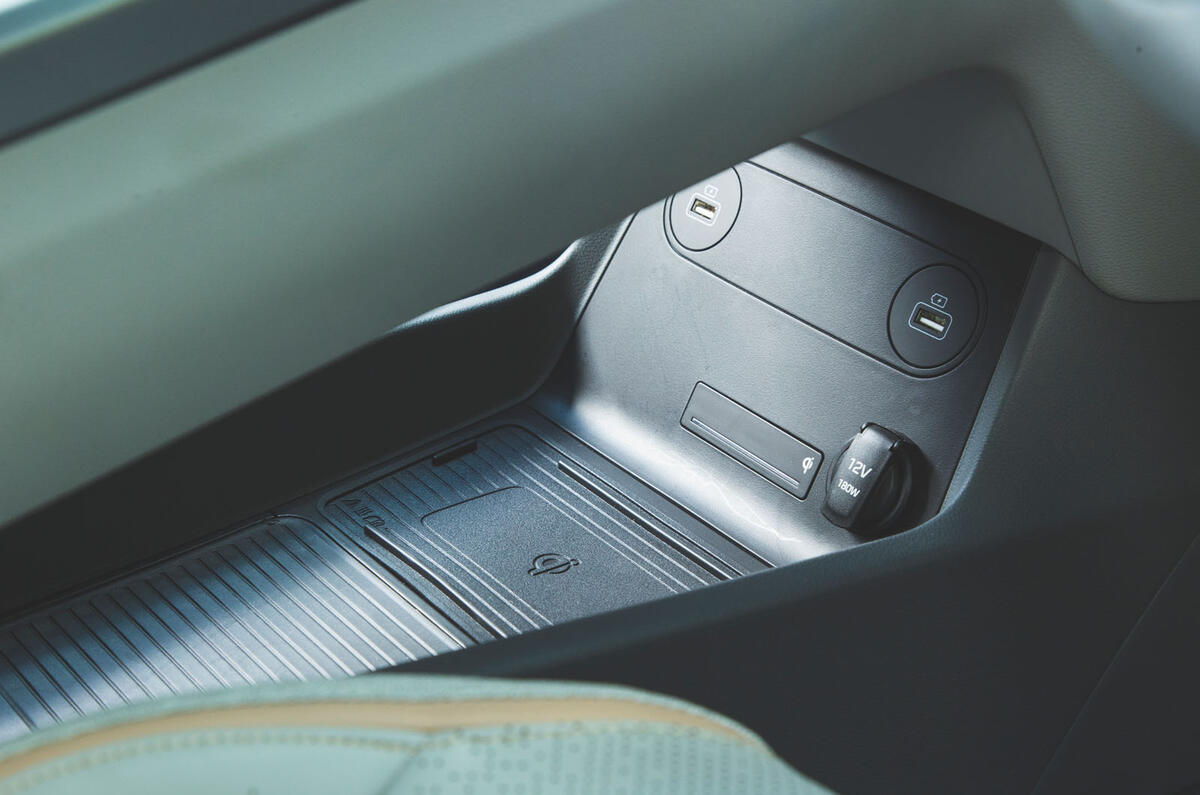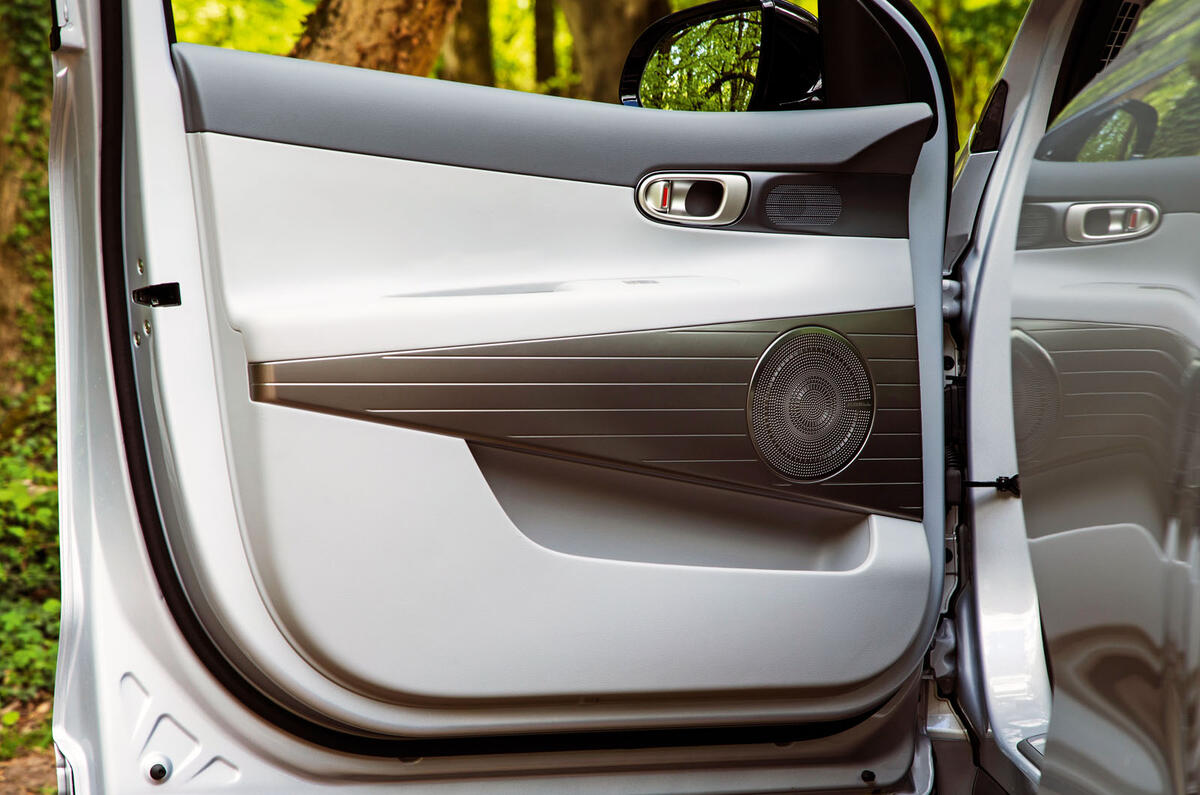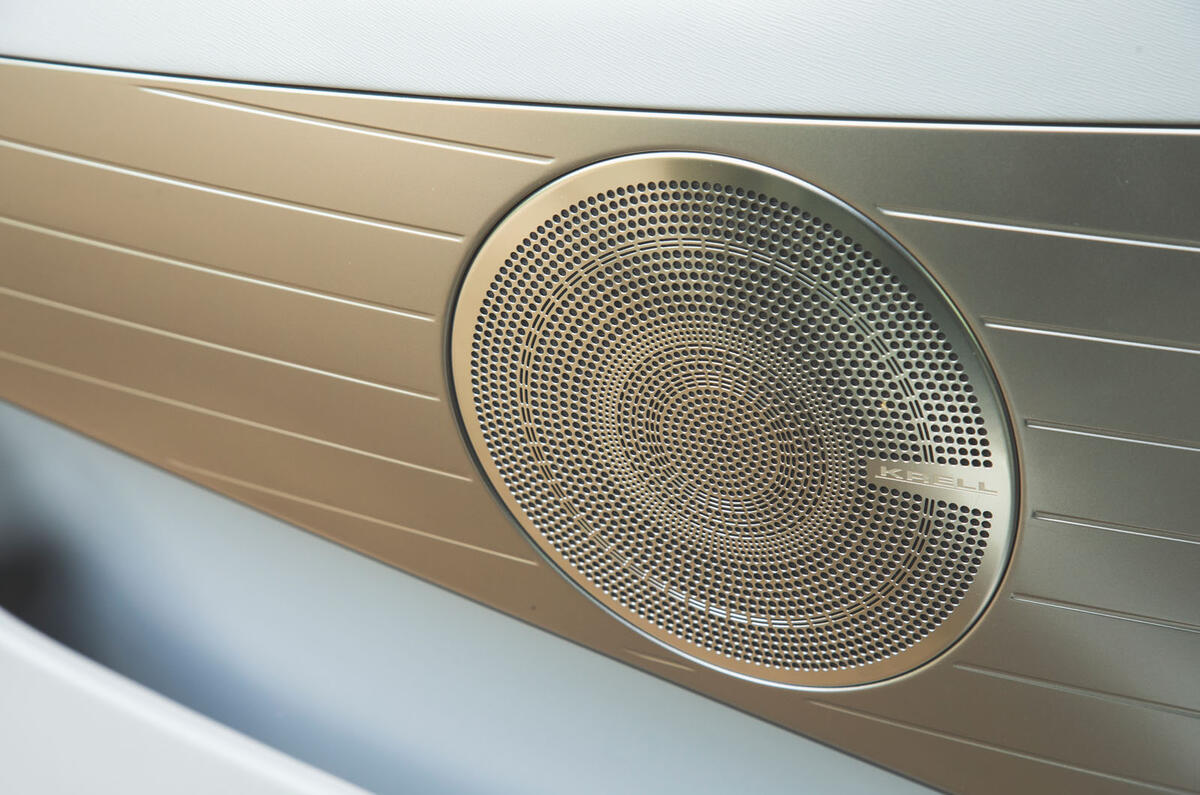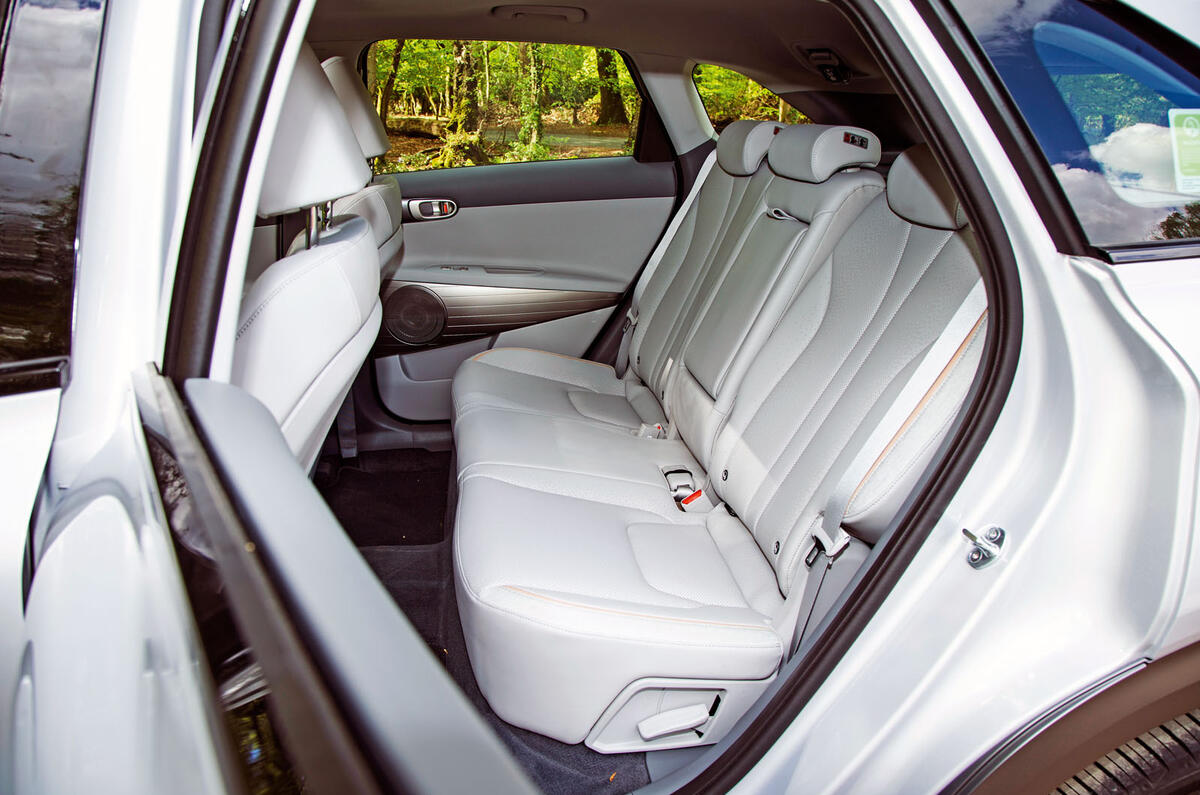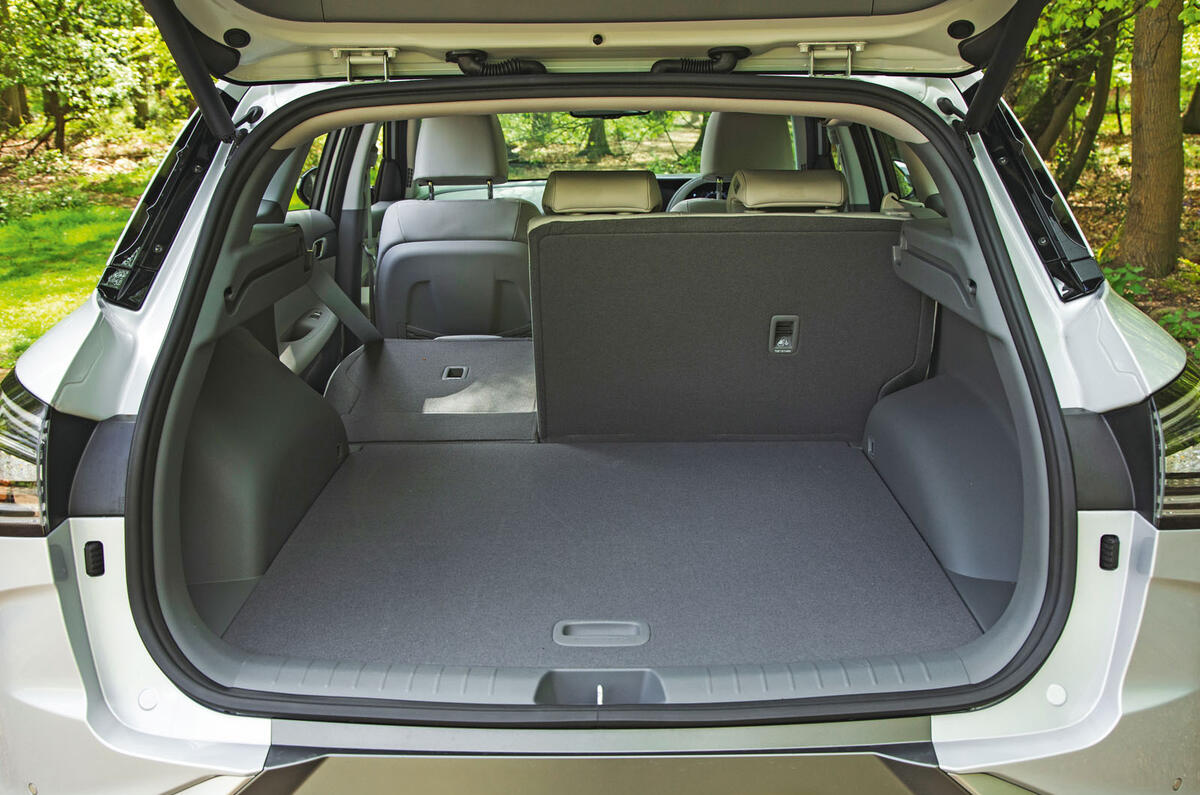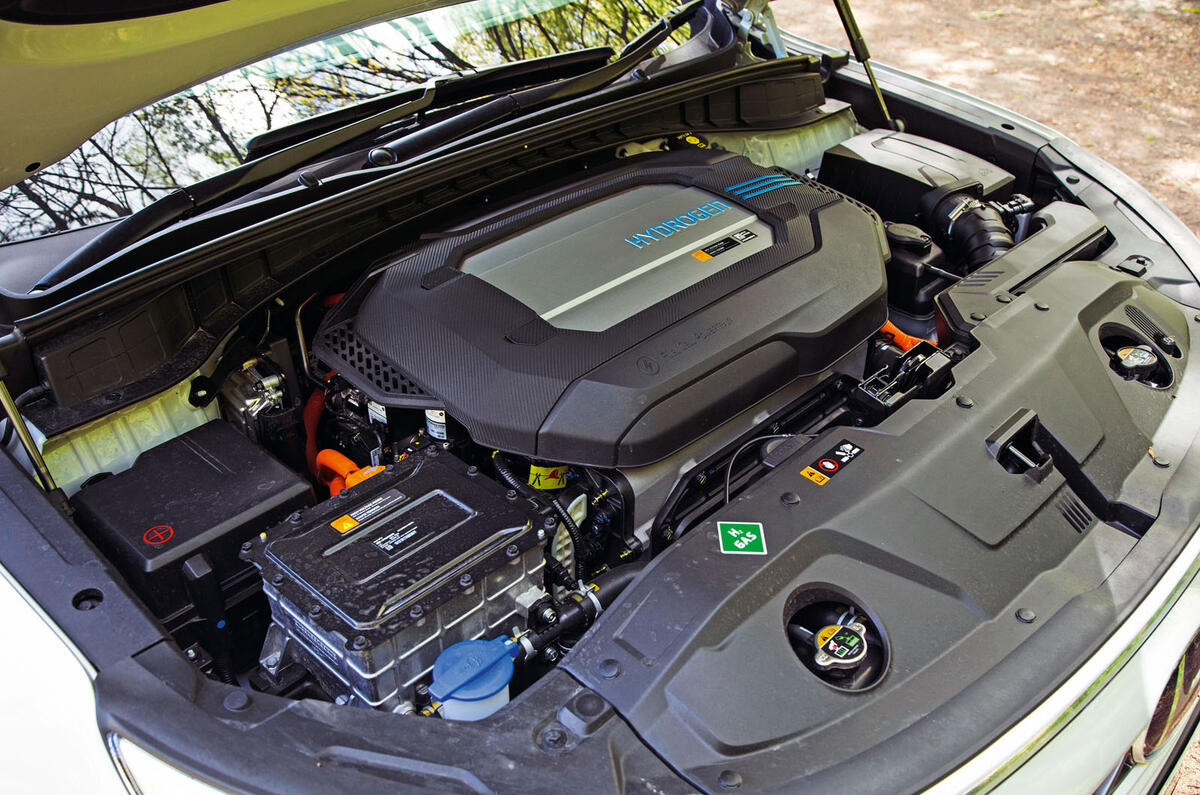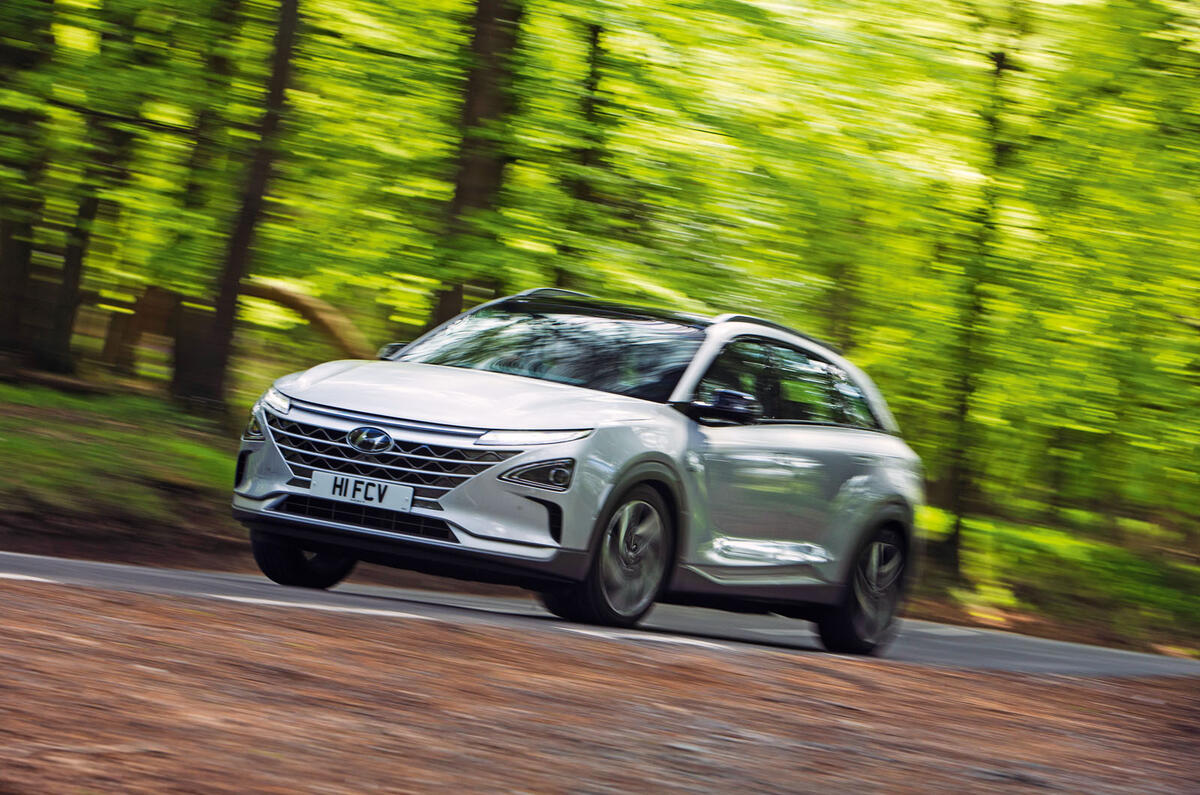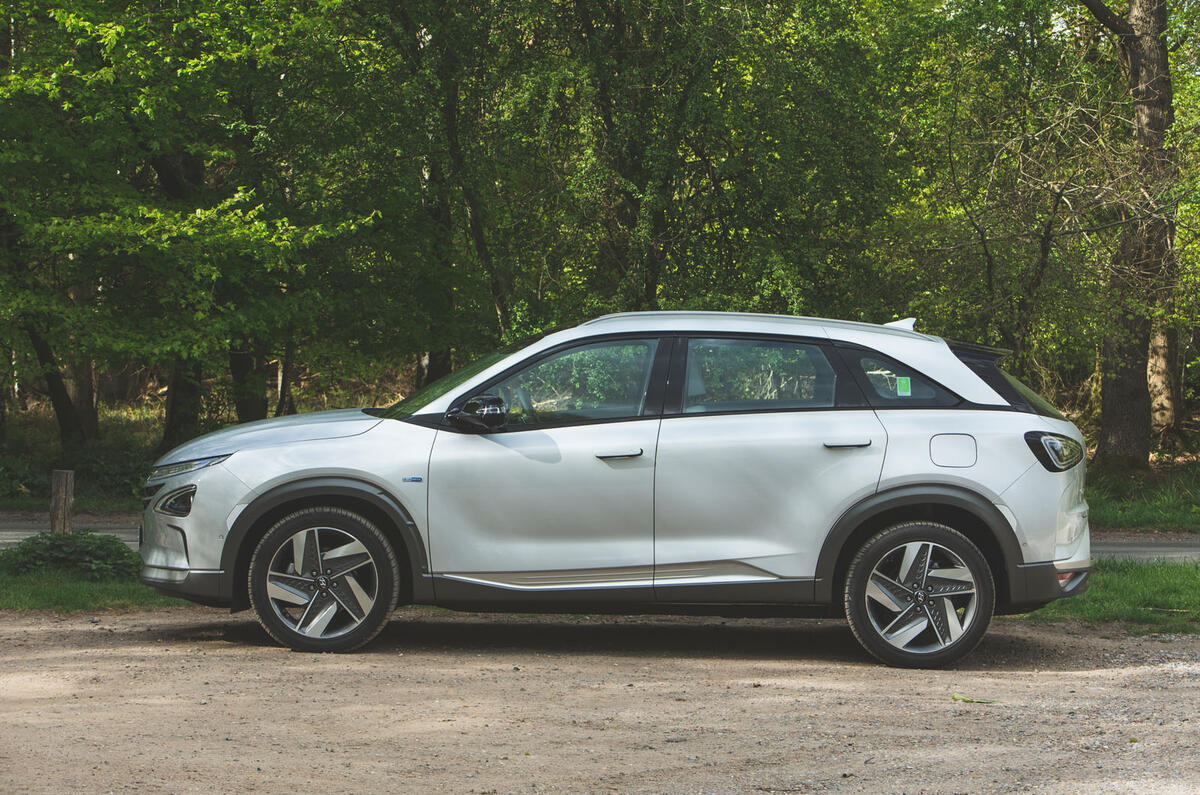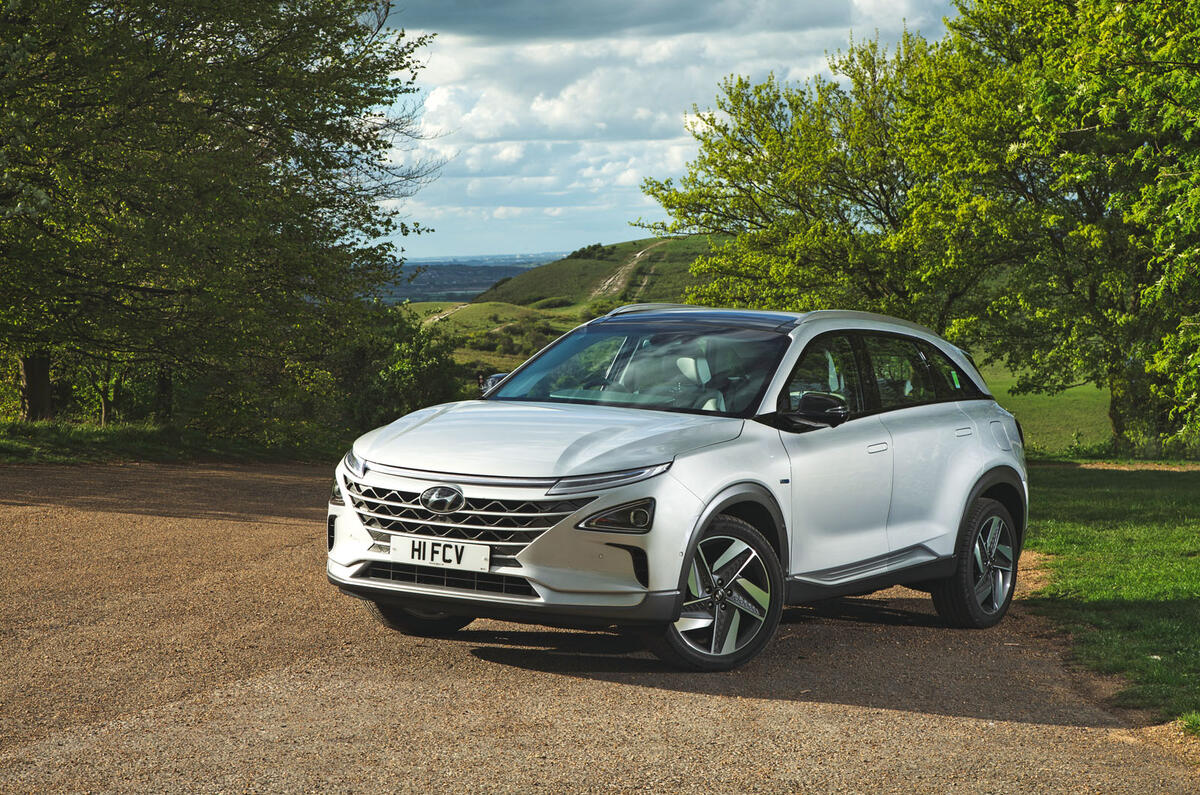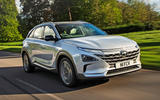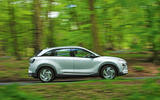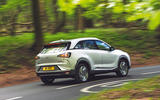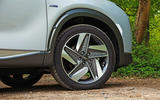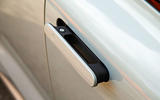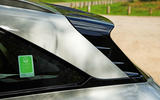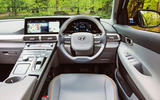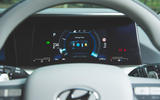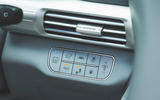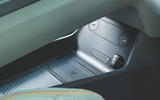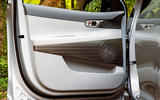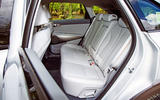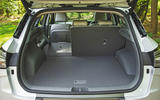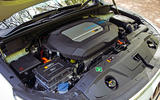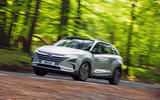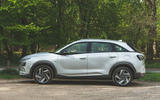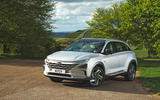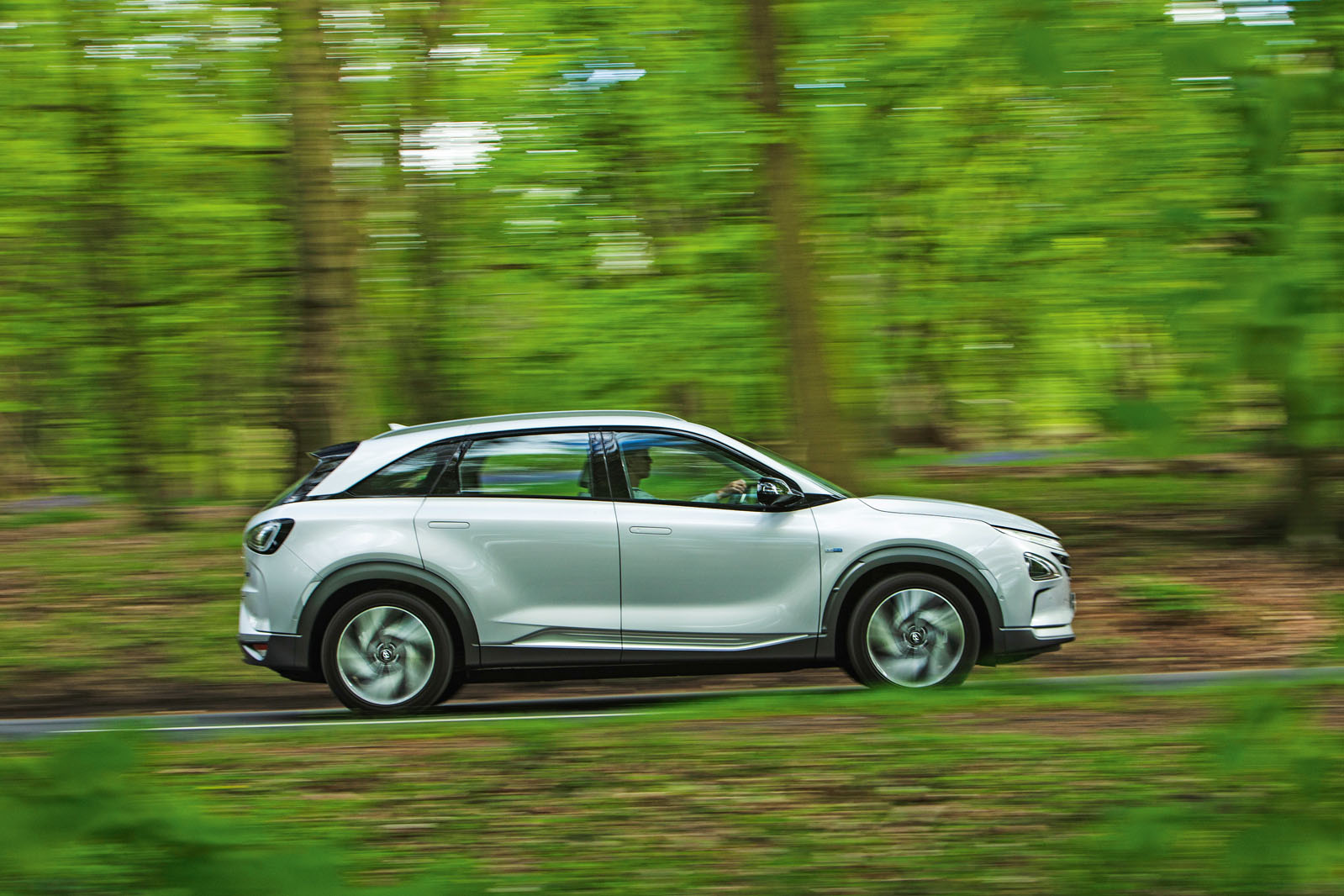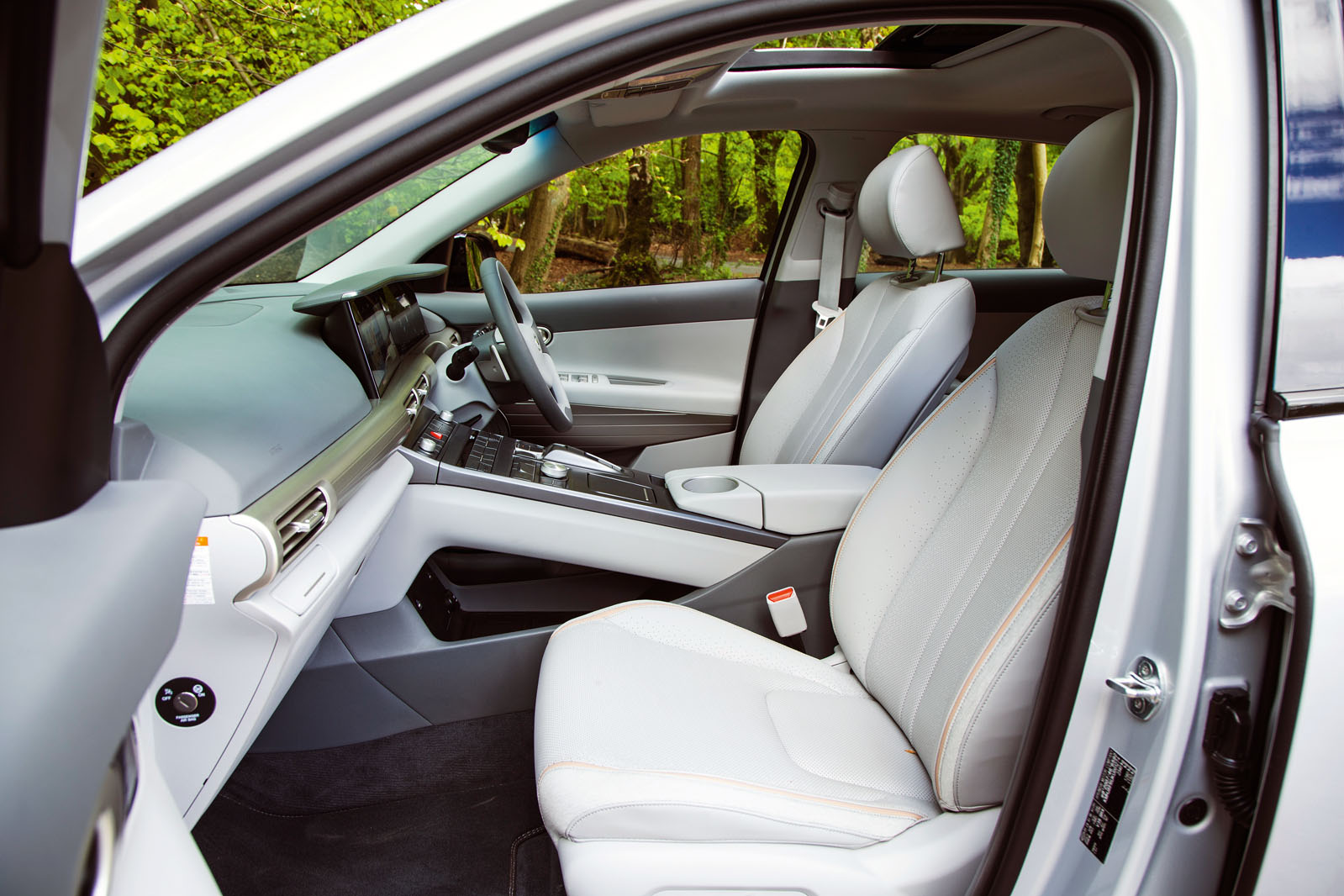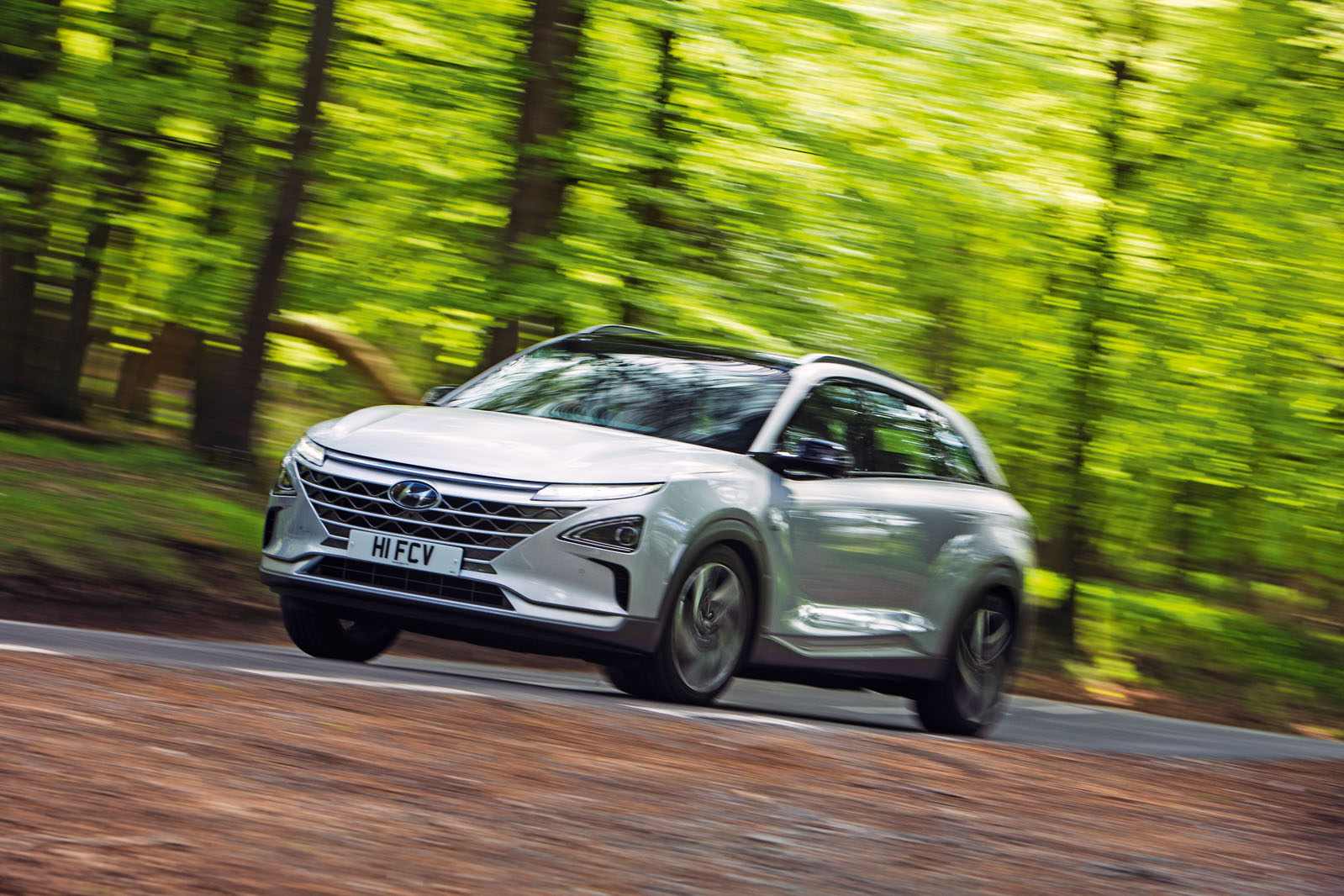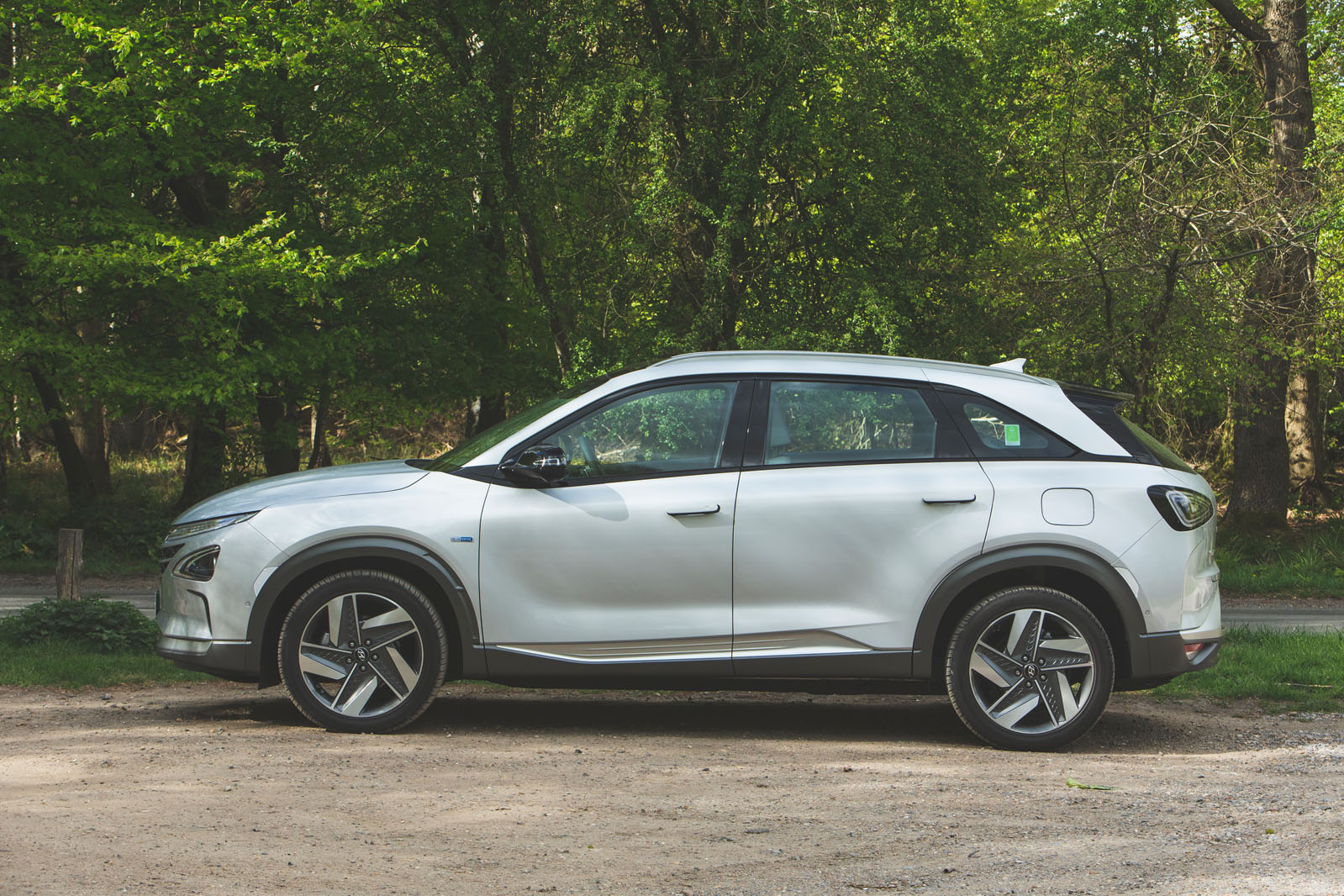The Nexo’s cabin is unlike any Hyundai interior we’ve come across. From behind the wheel, it seems to have been created by some future-gazing technophile from decades gone by, or one of the set designers of Star Trek: The Next Generation.
It’s the large, button-heavy centre console (we counted around 40 individual controls) that stands out most. Finished in silver and protruding down from below the fascia-mounted infotainment screen, it looks like a supercomputer that has come straight out of the world of science fiction, although mercifully there’s no maniacal “I’m sorry, Dave. I’m afraid I can’t do that” operating system to contend with.
The Nexo’s infotainment system makes use of a very generously sized 12.3in screen. This can be controlled either by touching the screen itself or by using the rotary dial and shortcut buttons mounted on the centre console. Regardless of how you choose to interact with it, the sharpness and general fluidity of the operating system seem superior to anything we’ve seen from Hyundai before.
An impressive roster of standard features includes satellite navigation, DAB radio, a wireless charging pad, Apple CarPlay and Android Auto. In addition to telling you where to go, the sat-nav system can also show you how far you can expect to travel in any given direction based on the amount of hydrogen left in the tanks at that point in time. And if you’re running low, it can guide you to the nearest filling station – provided that you’re in a part of the country that actually has one.
If the design of the centre console is unusual to behold, it’s equally strange to interact with while on the move. Hyundai should be commended for resisting the trend to remove all buttons in favour of touchscreen-based controls but, in reality, it has probably taken things too far in the other direction here. The sheer number of dials, rocker switches and buttons can be overwhelming on first acquaintance and learning where everything is takes a more than ideal amount of time.
That these controls – along with a number of the interior surfaces – are fashioned from materials that don’t quite feel expensive enough to belong on a £65,000 car is also a bit of a turn-off. No matter how futuristic the Nexo’s fuel cell technology is, it plainly shouldn’t feel at all low-rent when inspected by prodding fingers.
Still, the Nexo does win back some favour when it comes to roominess. We measured typical second-row leg room at 740mm, which means the Nexo trumps the Audi Q5 (720mm) and only just loses out to the BMW X3 (750mm). Head room isn’t quite as strong, coming in at 930mm versus 970mm for the Audi and 975mm for the BMW; likely a limitation of the packaging of the hydrogen tanks.
Overall, although you wouldn’t say the Nexo feels noticeably cramped, it’s difficult to ignore the feeling that there’s less room to move inside it than there is in those similarly sized conventional SUVs. A large battery beneath the boot floor means that theme continues when you get to luggage capacity. There’s 461 litres available in the Nexo, compared with 550 litres for both the Audi and BMW. While far from miserly, the compromise that comes with electing for the Nexo’s alternatively fuelled powertrain is still clear.


